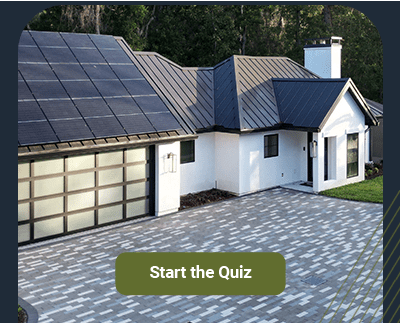Commercial roofing plays a crucial role in protecting buildings and their contents. Unlike residential roofing, which typically covers smaller, less complex structures, commercial roofs are designed for larger buildings and come with unique requirements. They must withstand varied environmental conditions and often support heavier loads, such as HVAC systems.
Today, we’re going to cover everything you need to know about commercial roofing. From types of roofs to materials used, choosing the right contractor, and more, you’ll be ready to search for the right commercial roofing contractor with confidence.
Types of Commercial Roofs
Flat Roofs
Flat roofs are common in commercial construction due to their cost-effectiveness and space utilization. They are easier to install and maintain but require robust waterproofing solutions to prevent water accumulation.
Pitched Roofs
Pitched roofs are less common in commercial buildings but offer excellent water drainage and a traditional aesthetic. They are more visible and can contribute to the building’s architectural appeal but might require more material and complex construction techniques.
Green Roofs
Green roofs are an innovative solution, incorporating vegetation to improve building insulation and reduce urban heat islands. While they are environmentally beneficial and aesthetically pleasing, they require specialized maintenance and a robust structural support system.
Material Suitability
When selecting the type of roof, consider the building’s size, location, and purpose. For instance, flat roofs are more suitable for large industrial buildings, while pitched roofs may be preferable for smaller commercial structures that seek a traditional appearance.
Materials Used in Commercial Roofing
A variety of materials can be used in commercial roofing. The one that is ultimately selected depends on the purpose of the building and any special considerations that need to be taken into account.
Some common materials include:
- Metal roofing: Metal roofing is durable and fire-resistant, suitable for various commercial buildings. It withstands extreme weather conditions and possesses a long lifespan, though it might be costlier upfront.
- Thermoplastic Roofing (TPO & PVC): Thermoplastic materials like TPO and PVC offer excellent heat resistance and energy efficiency. They are lightweight and can reduce cooling costs, making them ideal for buildings in warmer climates.
- Ethylene Propylene Diene Monomer (EPDM): EPDM roofing is known for its weather resistance and long lifespan. This rubber-based material is cost-effective and works well in various climates, especially in areas with frequent temperature fluctuations.
- Built-Up Roofing (BUR) Membranes: BUR involves multiple layers of bitumen and reinforcing fabrics, offering a high level of protection and durability. It’s a traditional roofing method that provides excellent waterproofing.
Best Practices in Commercial Roofing
Installation Techniques
Proper installation is crucial for the longevity and effectiveness of a commercial roof. It’s essential to work with professional contractors who understand the intricacies and finer details of commercial roofing systems and can ensure quality installation.
Maintenance and Upkeep
Regular maintenance, including inspections and cleaning, is vital to prolong the roof’s life and prevent costly repairs. It’s important to schedule routine checks, especially after extreme weather events.
Energy Efficiency and Sustainability
Optimizing a commercial roof for energy efficiency can significantly reduce heating and cooling costs. Materials like TPO and green roofing solutions contribute to a building’s overall energy efficiency.
Safety Considerations
Adhering to safety standards and regulations is non-negotiable in commercial roofing. This includes ensuring the safety of the workers during installation and maintenance, as well as the safety of the building’s occupants.
Choosing the Right Commercial Roofing Solution
Selecting the ideal roofing solution for a commercial building is a task that requires careful consideration and informed decision-making. The process begins with a thorough evaluation of the building’s specific needs. This involves considering factors such as the size and design of the building, its intended use, and the weight-bearing capacity of its structure. Different types of commercial buildings, like warehouses, office buildings, or retail spaces, may have varied roofing requirements.
Equally important is understanding the local climate, as it significantly impacts the choice of roofing material. Areas with heavy rainfall, snow, or extreme temperatures necessitate roofing materials that can withstand these conditions. For instance, in areas prone to high temperatures, choosing a reflective roofing material can help reduce cooling costs.
Budget considerations are also vital. While cost-effectiveness is a primary concern, it is essential to balance the initial installation cost with the long-term durability and maintenance requirements of the roofing material. Some materials may have a higher upfront cost but offer greater longevity and lower maintenance, leading to cost savings over time.
The variety of roofing materials and types available today range from traditional options like asphalt and metal to more modern and sustainable choices like green roofing or solar tiles. Each material and type comes with its distinct benefits and challenges. For example, metal roofs are durable and fire-resistant but can be more expensive, while asphalt shingles are cost-effective but may not last as long.
Beyond the material, the selection of the right roofing contractor is critical. The expertise of the contractor significantly influences the quality and durability of the roof. It’s advisable to choose contractors with substantial experience in commercial roofing, as they will be more familiar with the challenges and requirements of these types of installations. Look for professionals with a strong track record of quality installations in commercial settings. Checking for licenses, insurance, and references are crucial steps in this process.
Finally, consider the roof’s environmental impact and energy efficiency. Eco-friendly roofing materials and designs can help reduce the building’s carbon footprint and potentially offer energy savings. This aspect is increasingly important in today’s environmentally conscious market.
Get The Right Roof For Your St. Augustine Business
Selecting the right commercial roofing system requires careful consideration of various factors, including roof type, materials, and best practices. Engaging with professional contractors for installation and maintenance is crucial for the longevity and effectiveness of the roof. The choice made today will impact the building’s functionality and efficiency for years to come.
If you need commercial roofing services for your St. Augustine-area business, schedule a free commercial roofing inspection today at HW Roofing.



